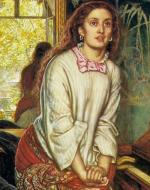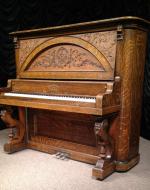Created by Ashley Narsu on Sat, 02/15/2025 - 13:38
Description:
My Narrative: I was struck by the importance of pianos within Victorian literature; Victorians viewed piano playing as a useful and impressive task. Women were additonally viewed highly for their aptitude towards music and playing the piano. I was inspired by the way a piano transforms a Victorian household. The family members and their guests gather around the piano to watch the player and/or singer, so it becomes quite a social experience. I learned this from Charlotte Brontë's Jane Eyre, where the piano is a focal point in many social gatherings. Jane plays a little piano but hopes to become a more accomplished player, which would mean that she could properly accompany Mr. Rochester's vocals. In the Great Exhibition, they showed many cabinet pianos, but not as many smaller sizes (cottages and piccolos).
My Booth: I laser printed the structure in the idea lab to accommodate my furniture comfortably. I used paper and vinyl as flooring and wallpaper. Using acrylic paint, I recreated a painting of Victoria on her wedding day. Also using acrylic paint, I made a mirror to stand on the wall beside the piano. I made all the furniture in the woodshop, using a band saw, belt sander, scroll saw, miter saw, and (notably) sandpaper. I used walnut stain and acrylic paint for the details. There are some wooden accessories I made as well that are not pictured (these include: Jane Eyre book, unamed book, piano sheet music, piano bench).





